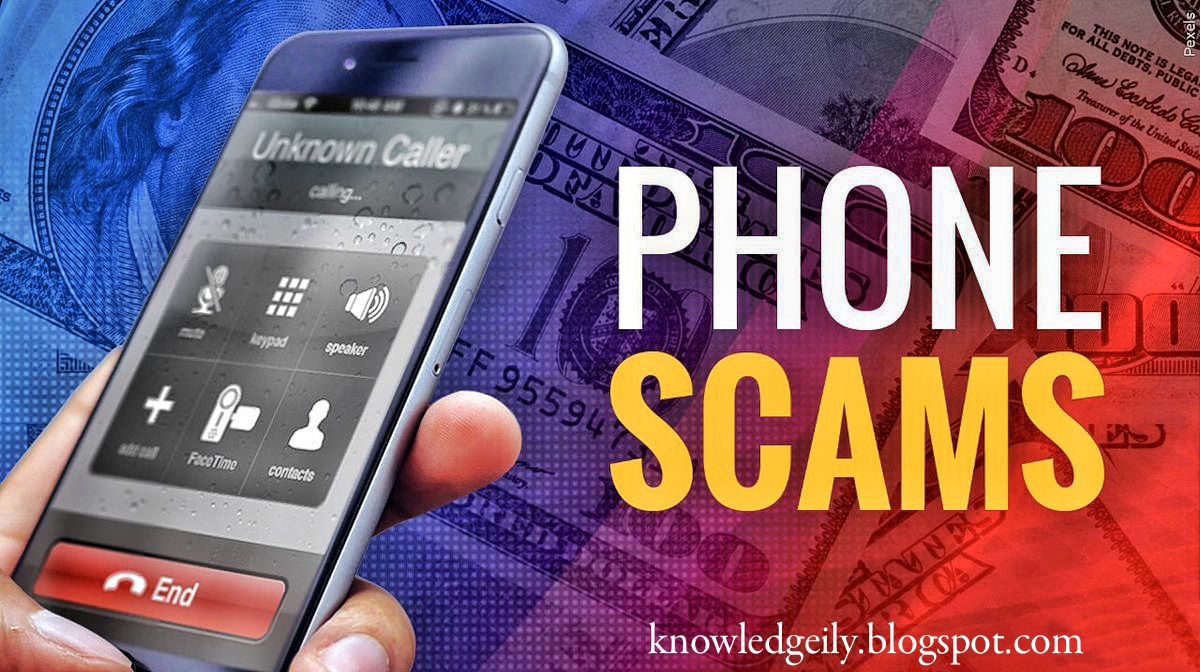Defending Your Privacy: How to Catch Fraud Calls from Hackers
In an age of increasing digital connectivity, the risk of receiving fraudulent phone calls and falling victim to scams is higher than ever. Hackers and scammers are constantly devising new tactics to deceive unsuspecting individuals. In this tech guide article, we will explore how you can protect yourself from fraud calls by recognizing and catching them before they cause any harm.
Recognizing Fraudulent Calls
Fraud calls,
often originating from spoofed numbers and employing various deceptive
techniques, can take several forms.
•Phishing
Calls: Scammers
impersonate legitimate organizations, like banks or government agencies, to
trick you into revealing sensitive information.
•Tech
Support Scams:
Fraudsters pose as tech support agents from well-known companies, claiming your
device is infected with malware. They request remote access to your computer or
ask for payment to fix nonexistent issues.
•Robocalls: Automated calls deliver pre-recorded
messages, often promoting fake products, services, or scams.
•Caller
ID Spoofing: Hackers
manipulate the caller ID to make it appear as if they are calling from a
trusted source.
•Impersonation
Calls: Scammers
pretend to be relatives in distress, law enforcement officials, or utility
company representatives, attempting to pressure you into sending money.
How to Catch Fraud Calls
While
scammers can be quite convincing, there are effective strategies to identify
and catch fraudulent calls:
•Be
Skeptical: Always approach
unsolicited calls with caution. Legitimate organizations, especially government
agencies or financial institutions, typically don't make unsolicited calls for
personal or sensitive information.
•Verify
the Caller: If you
receive a call from an organization claiming to be a bank, utility company, or
government agency, hang up and call the official phone number of the
institution to verify the call.
•Don't
Share Personal Information: Never provide sensitive information, such as your Social Security
number, credit card details, or login credentials, over the phone unless you
have initiated the call and trust the recipient.
•Be
Wary of Threats:
Scammers often use intimidation and threats to pressure you. Be cautious if the
caller threatens legal action or claims you owe money. Hang up and
independently verify the situation.
•Check
the Caller ID: Even
though caller ID can be easily manipulated, it's still worth checking. If you
receive a call from a familiar number that seems suspicious, call back using
the official contact information for that entity.
•Do
Not Engage: Engaging
with scammers can lead to more calls. Avoid responding to suspicious texts,
pressing any keys, or confirming your phone number's validity during the call.
Subscribe our WhatsApp channel Click to join
Use Technology to Catch Fraud Calls
Advancements
in technology have given us valuable tools to help catch and prevent fraudulent
calls:
•Call
Blocking Apps:
Several apps, such as Hiya, TrueCaller, and RoboKiller, can identify and block
fraudulent calls based on community-reported scams. These apps also provide
real-time caller ID information.
•Built-in
Phone Features: Both
Android and iOS devices offer built-in features to block and filter calls.
Android devices have a "Call Screening" feature, while iOS devices
have "Silence Unknown Callers."
•Register
with the National Do Not Call Registry: By registering your phone number with the National Do
Not Call Registry (in the United States), you can reduce the number of unwanted
telemarketing calls you receive. Visit donotcall.gov to register.
•Carrier
Services: Many mobile
carriers offer free or paid services to help block spam and fraudulent calls.
Check with your carrier for available options.
Educate Yourself and Stay Informed
Preventing
fraud calls also requires staying informed about the latest scams and
understanding the tactics scammers use. You can do this by:
•Keeping
Up with News: Stay
updated on news related to phone scams and fraud calls. Awareness of ongoing
scams can help you recognize and avoid them.
•Researching
Common Scams:
Familiarize yourself with common phone scams, such as the IRS impersonation
scam, tech support scams, and social engineering tactics used by fraudsters.
•Community
Reporting: Report
fraudulent calls and scams to appropriate authorities and community-driven
resources. By sharing your experiences, you can help others avoid falling
victim to similar scams.
•Government
Websites: Many
governments maintain websites with information about the latest scams and fraud
alerts. Check these websites for updates and resources on fraud prevention.
Additional Tips for Catching Fraud Calls
To further
enhance your ability to catch fraud calls, consider the following additional
tips:
•Record
the Call: If you receive a fraudulent call, consider recording the
conversation. Laws regarding call recording vary by location, so make sure you
are in compliance with legal requirements.
•Document
the Details: Keep records of fraudulent calls, including the caller's phone
number, the date and time of the call, and any information the caller provided.
This information can be useful if you need to report the call to law
enforcement or regulatory agencies.
•Use
VoIP Services: Some Voice over Internet Protocol (VoIP) services and landline
providers offer call screening and blocking features to help identify and
prevent fraud calls.
•Secure
Your Personal Information: Safeguard your personal information by regularly
updating your passwords and being cautious about sharing data online. Many
fraud calls are initiated using information obtained from data breaches or
social engineering attacks.
Reporting Fraud Calls
If you
encounter a fraudulent call or suspect a phone scam, it's essential to report
it. Reporting helps authorities track down scammers and protects potential
victims. Here's how you can report fraud calls:
•Report
to the DoT (Department of Telecommunications): You can report unsolicited commercial
communications to the Department of Telecommunications (DoT) by forwarding the
message or call details to 1909 or visiting the official DoT website.
•Register
on the National Do Not Call Registry (NDNC): The Telecom Regulatory Authority of India (TRAI)
has established the National Do Not Call Registry (NDNC) to reduce unsolicited
telemarketing calls. You can register your phone number on the NDNC to reduce
the number of such calls.
•Lodge
a Complaint with TRAI: If
you continue to receive fraudulent or spam calls, you can file a complaint with
TRAI. Visit TRAI's official website and follow the instructions to file a
complaint.
•Federal
Trade Commission (FTC): In the United States, you can report fraud calls to the FTC through
their website at ftccomplaintassistant.gov.
•Internet
Crime Complaint Center (IC3): For internet-related fraud, you can file a complaint with the IC3 at
ic3.gov.
Catching
fraud calls and protecting yourself from scams is a vital part of maintaining
your online security and privacy. By staying informed, using technology and
resources available, and reporting fraudulent calls, you can become a more
vigilant and empowered defender of your personal information.
Exciting news! Knowledgeily is now on WhatsApp Channels Subscribe Us by clicking the link and stay updated with the latest update👉 Click here
Most Read: AI Reveals a Billion Tons of Hidden Trees in Europe's Urban and Rural Areas












Post a Comment